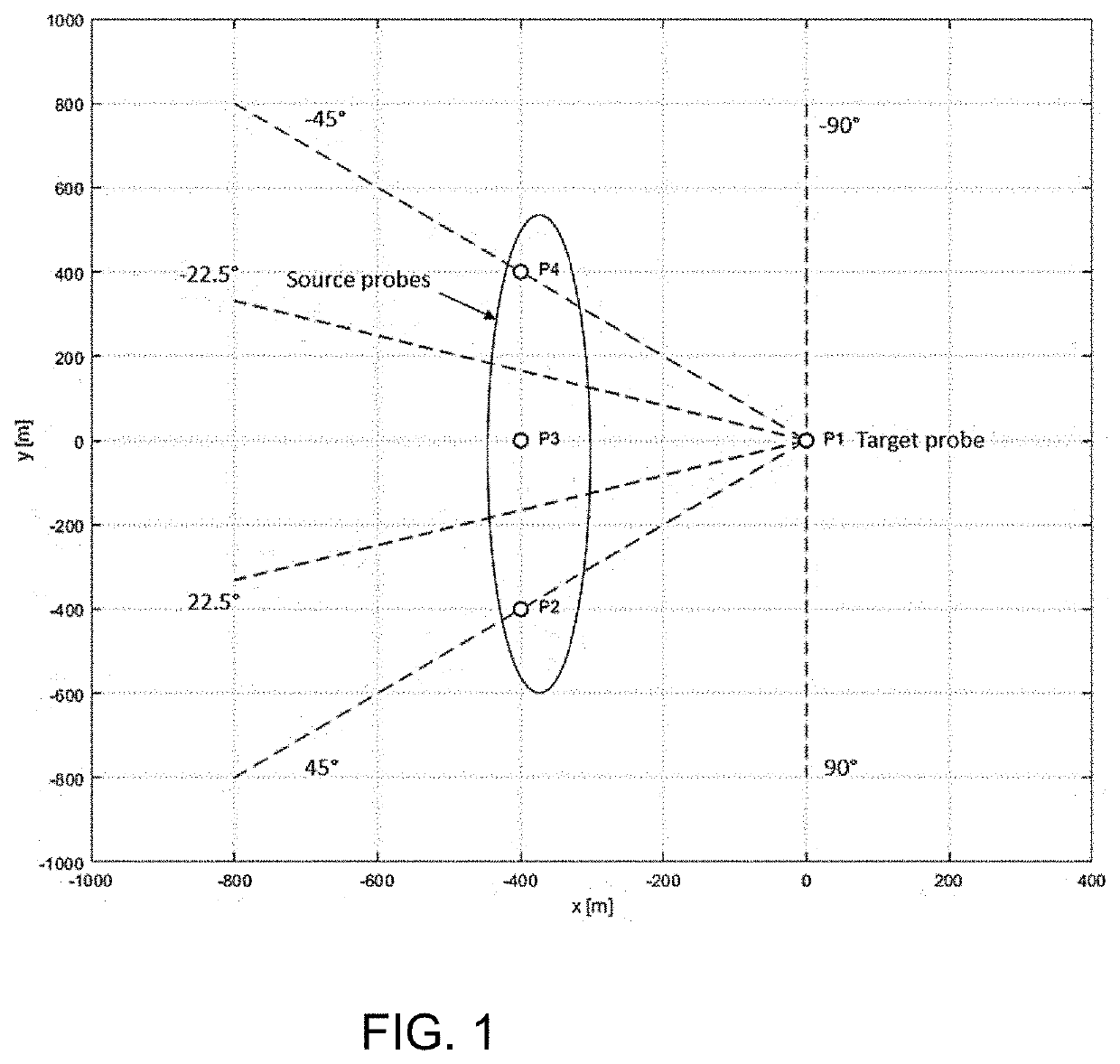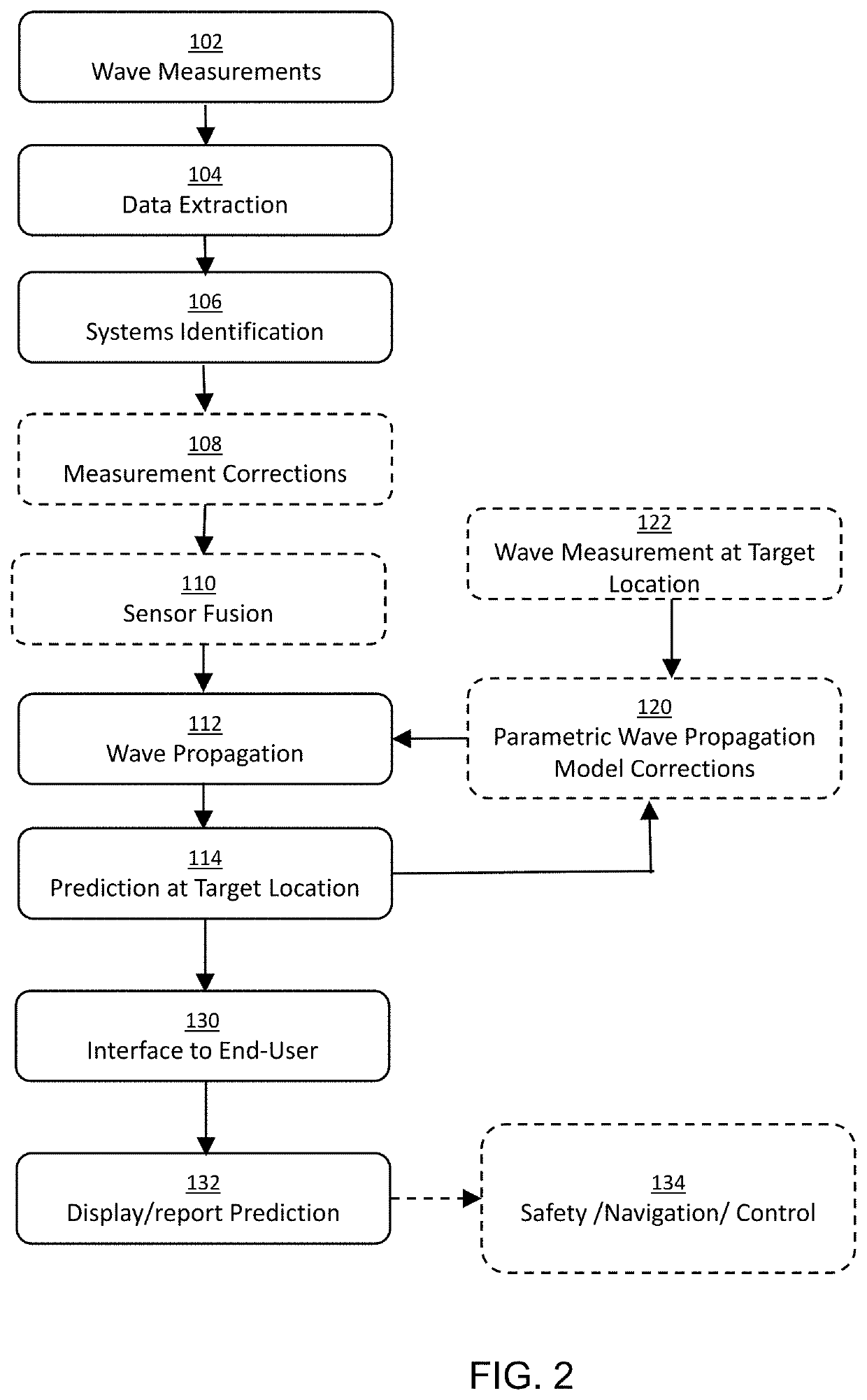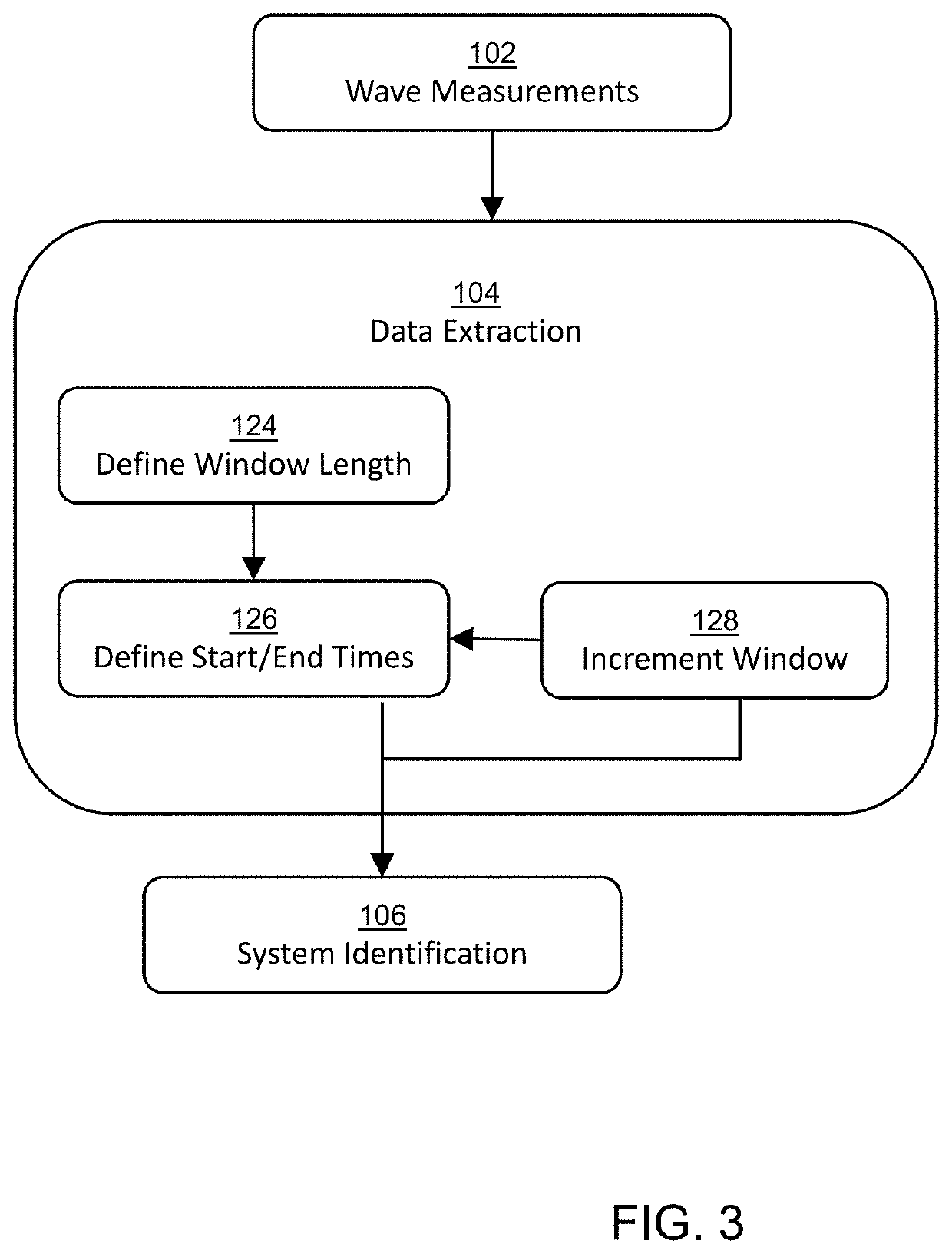System and method for wave prediction
a wave and wave technology, applied in the field of system and method for wave prediction, can solve the problems of limited operational period of activities, no one implemented algorithm frameworks to produce outputs in real-time, and none of them leveraged xyz measurements directly, etc., to achieve accurate wave identification
- Summary
- Abstract
- Description
- Claims
- Application Information
AI Technical Summary
Benefits of technology
Problems solved by technology
Method used
Image
Examples
example 1
ation Results
[0102]Deterministic Sea Wave Prediction (DSWP) implies a phase-resolved short-term (30-90 sec) prediction of the sea surface elevation to the order of centimeters and seconds accuracy and precision. In this sense, it differs from traditional statistical descriptions of the sea state. This imposes <10 sec computation time and update rate for DSWP system.
[0103]For an initial-time record of 120 s (sliding window length Tw) and an initial time-offset of 10 s (sliding window offset To), comparative simulation results using the SWM method are shown in FIGS. 6A-6C, which provide the predictive simulation results for the first 3-time windows: FIG. 6A—first slide with a time-offset of 10 s (window 1); FIG. 6B—second-slide with a time-offset of 10 s (window 2); and FIG. 6C—third-slide with a time-offset of 10 s (window 3). One of the main observations from the windowed prediction is that the first 10 s of the time-window gave reasonably good comparisons with the measured data. Su...
example 2
iction Accuracy
[0105]A sensitivity analysis was carried out to understand the effect of the sliding window length and the sliding window offset in the SWM. To quantify the prediction accuracy, the simulation results of the propagated wave are normalized to the maximum value of the surface elevation at the target location and the error was computed for multiple record lengths.
[0106]1st campaign—To observe the difference in the prediction error between a single point measurement and utilizing multiple probe surface elevation data, simulation results were also performed using a probe combination method to fully characterize the wave-field. FIG. 8 provides a comparison of the normalized mean error for different record lengths for a full-length propagation. Comparison of error for both the methods is shown in FIG. 9. Results of the sensitivity analysis in terms of varying the sliding window length and the sliding window offsets from a real-time prediction stand-point where the source is ...
example 3
Accuracy with RTK
[0109]The primary purpose of this exercise was to estimate the measurement accuracy of the purpose-built GPS buoys. Since these buoys rely only on GPS data to estimate their x, y, z position as a function of time, testing was done to evaluate the contribution of measurement accuracy to the overall wave prediction errors identified. As a secondary effort, an Inertial Measurement Unit (IMU) measurement package that is typically used in drone autopilots—a PIXHAWK® 4 running a PX4 operating system, was incorporated. In-ocean validation was performed using a survey-grade RTK system that allows instantaneous streaming of position at a 1 Hz sampling rate with an error of less than 25 mm (1 inch). Given wave amplitudes on the order of 1 m, this allowed accurate benchmarking of the buoy motion in a relevant environment. This exercise involved evaluation of the IMU and buoy to RTK comparison. Overall the work showed that accurate wave measurement is important to enable accura...
PUM
 Login to View More
Login to View More Abstract
Description
Claims
Application Information
 Login to View More
Login to View More - R&D
- Intellectual Property
- Life Sciences
- Materials
- Tech Scout
- Unparalleled Data Quality
- Higher Quality Content
- 60% Fewer Hallucinations
Browse by: Latest US Patents, China's latest patents, Technical Efficacy Thesaurus, Application Domain, Technology Topic, Popular Technical Reports.
© 2025 PatSnap. All rights reserved.Legal|Privacy policy|Modern Slavery Act Transparency Statement|Sitemap|About US| Contact US: help@patsnap.com



